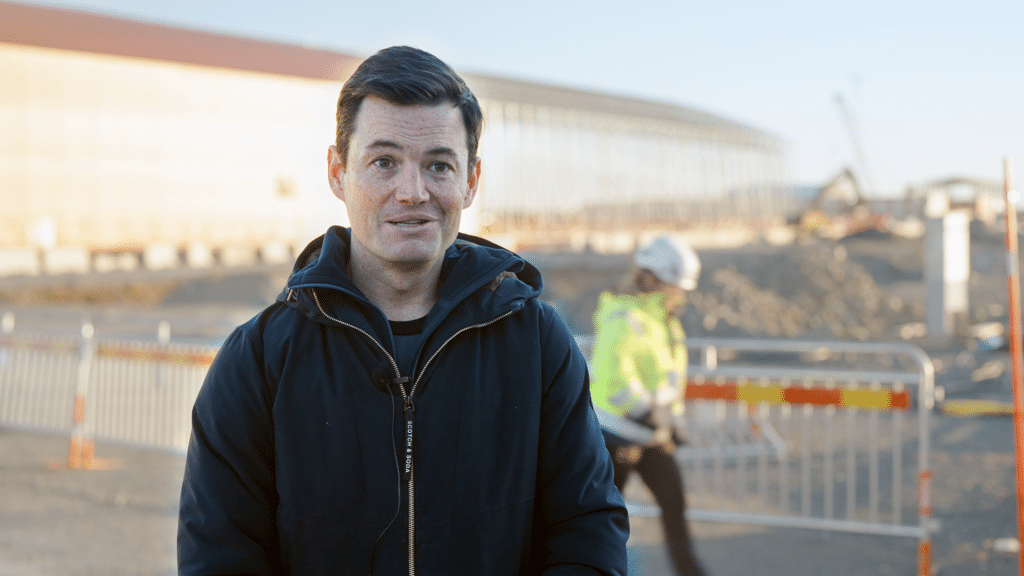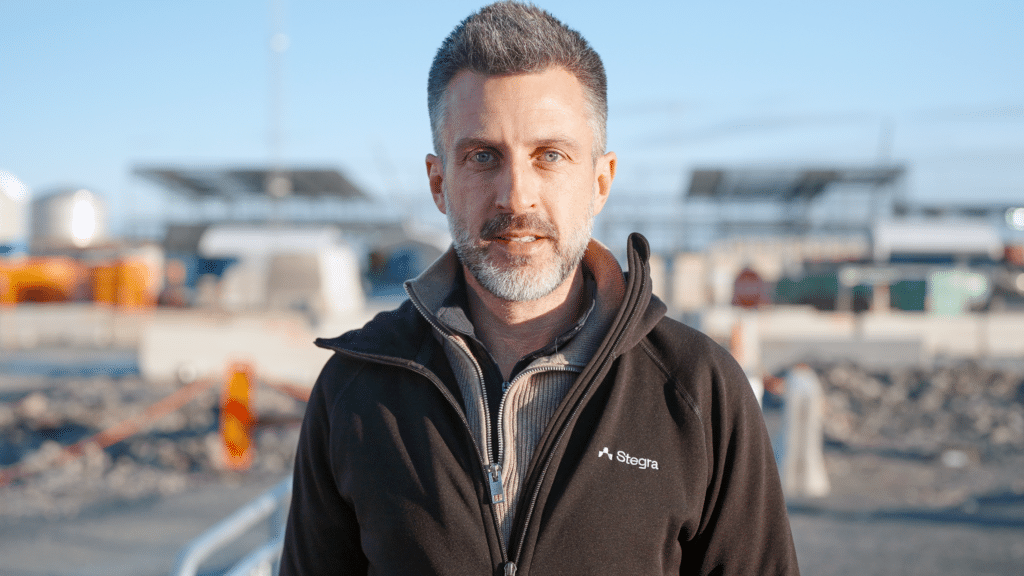Representatives from some of Europe’s largest banks and investment funds recently gathered in Boden to witness the progress of Stegra’s green steel plant. With a total funding of €6.5 billion Euro the project has become a European symbol of industrial transformation.
On a clear November morning, around 80 representatives from Europe’s leading banks and investment funds arrived to witness Stegra’s historic industrial venture at Boden Industrial Park.
The total funding amounts to EUR 6.5 billion (approximately SEK 75 billion), and the lenders providing EUR 4.2 billion come from different parts of Europe and the United States.
Among the lenders involved from the start is Société Générale, one of Europe’s largest banks. Tim Hawk, director of mining, metals and industrial finance, describes the initiative as a key part of the bank’s energy transition strategy.
– This is one of the most important projects we have participated in. In fact, it has been one of the most strategic projects globally when it comes to accelerating the decarbonization of heavy industry,” he says.
 Tim Hawk, Société Générale
Tim Hawk, Société Générale
Risk management and innovation
Tim Hawk explains that the project required a robust approach to risk management. While the bank understood well the potential for green steel early on, there were many elements of the business case that required thorough examination.
– To ensure it was a project that we and other lenders would consider bankable, assessed both the technology and market conditions. At Société Générale, we quickly saw that the demand for green steel was growing and that the hydrogen-based production technology required an evolution rather than a revolution of technologies that were already well established. Through meticulous due diligence and close collaboration with Stegra, we were able to convince both ourselves and our co-investors of the project’s strengths,” he says.
The project is Europe’s first major steel initiative in over half a century and also one of the most innovative. The plant employs technology that uses hydrogen in the production process, which is expected to reduce carbon dioxide emissions by up to 95% compared to traditional blast furnace steelmaking.
– Standing here today and seeing the construction progress is fantastic. The work is now underway, and many of the risks we identified earlier have already been well mitigated given the level of progress made,” adds Hawk.
Personal pride
 Christoph Zinsser, Stegra
Christoph Zinsser, Stegra
Christoph Zinsser, Head of Project Finance at Stegra, is one of the employees who helped secure the capital for the project. The financing will enable the construction and operation of the first production phase of the steel plant, which will produce 2.5 million tons of green steel per year.
– For me, it’s a tremendous source of pride to show our financiers how far we’ve come. The reactions have been overwhelmingly positive—our lenders are impressed by how much we’ve accomplished in such a short time,” he says.
For some of the lenders, this was their second visit to the site. Back then, about a year and a half ago, the site was mostly rubble. Today, giant buildings stand half-finished. In another 1.5 years, the ramp-up of production to 2.5 million tons of green steel per year is expected to begin.
– We are building something that is not just a factory, but a future,” says Christoph Zinsser.